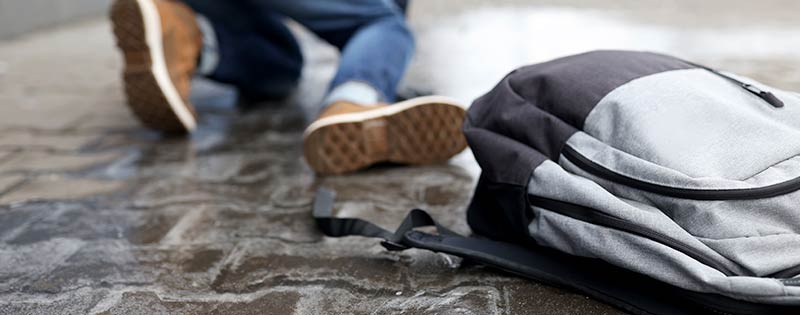by Brent Hearn •
Unless you live in one of the few areas of the country that’s perpetually sunny and warm—and we just love that for you; we’re not envious at all—there’s a decent chance it’ll be cold outside today. And if not, it probably was fairly recently or will be fairly soon. (Not specific enough for you? We’re a provider-owned chiropractic network, not meteorologists.)
According to the calendar’s reckoning, we’re almost exactly halfway through the winter. And though spring is on its way, those of us who don’t live in a tropical paradise still have to deal with the pesky parts of winter weather until it arrives. And one of the peskiest of all, not to mention one of the most dangerous, is the increased risk of slips and falls.
Winter weather makes for dicey footing, but there are steps you can take to…well, to be careful about the steps you take.
Plan Ahead
If you know there’s inclement winter weather headed your way, plan accordingly. Run any errands and complete any outside tasks you have looming. Reducing your time in hazardous conditions decreases the likelihood of a nasty fall.
Choose Your Shoes
If you have to be outside in slippery conditions, opt for footwear with good traction and “grippy” soles. Rubber and neoprene are better than leather and plastic.
Baby Steps
Mayo Clinic Health System suggests that to keep your balance in slippery conditions, “take small steps and waddle a bit like a penguin.” The Pedestrian Safety Committee at Princeton University recommends that you “bend slightly forward and shorten your stride or shuffle your feet for better stability.” Whichever method you choose, the underlying idea is clear. It’s not “normal” weather, so don’t take normal steps. Take careful, cautious ones.
Choose the Safest Route
What’s the shortest, safest path from where you are to where you want to be? Take note of icy patches, slushy areas, and piles of snow. Even if roads have been cleared, it’s important to look for slippery spots that might remain. When conditions are dangerous, you don’t have the luxury of moving mindlessly. Be intentional about your route.
Take Your Time
It’s much more difficult to be careful when you’re in a hurry. Walking to your vehicle or public transportation is likely going to take longer when conditions are icy and being in a hurry to get there makes it more likely that you’ll end up in a hospital bed rather than at your destination.
Car Care
Getting into and out of vehicles safely becomes much trickier when it’s slippery. Your weight shifts and your footing isn’t as sure, so take care and use the vehicle for support.
Swallow Your Pride
If your mobility is limited and you have access to a cane or walker, use it. Stability improves the odds you’ll arrive at your destination. Stubbornness improves the odds you’ll end up in traction.
Stay Inside
Ever seen the 80s movie War Games? (If not, you should; it’s a gem.) There’s a line in there that’s apropos for both thermonuclear war and walking on slippery surfaces. “The only winning move is not to play.” Taking into account your age, general health, any risk factors that might limit your mobility or increase the repercussions of a fall, ask yourself: “Is the risk really worth it? Or can what I need to do wait until conditions improve?”
Remember. Keeping your footing until spring greatly increases your odds of enjoying it pain-free!









 ▶︎
▶︎  Why is the Discount Challenge prize amount $15,024? Because that is the average “per-occurrence” fine for Medicare inducements. That’s not $15,024 per patient, that’s not per provider, that’s PER VISIT. Stinks, doesn’t it? To us, the prize amount is worth the investment if we can help our profession better understand proper discounting.
Why is the Discount Challenge prize amount $15,024? Because that is the average “per-occurrence” fine for Medicare inducements. That’s not $15,024 per patient, that’s not per provider, that’s PER VISIT. Stinks, doesn’t it? To us, the prize amount is worth the investment if we can help our profession better understand proper discounting.